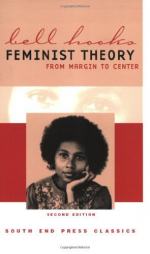
|
| Name: _________________________ | Period: ___________________ |
This test consists of 5 short answer questions and 1 (of 3) essay topics.
Short Answer Questions
1. What reason does the author give for lower and middle class women's relationship with power?
2. How does the author view the kind of power practiced by women from non-affluent communities?
3. Which one of the following is true of the author beliefs about child care centers?
4. In the author's view, which prejudices is it important for women of color to transcend?
5. How did many lower/middle class and/or non-white women respond to this view of work?
Essay Topics
Write an essay for ONE of the following topics:
Essay Topic 1
Essay on Ch. 2: Definition of feminism.
In Ch. 2, the author advocates ending sexist oppression as a better definition of feminism.
1) How does the author define sexist oppression and how does ending sexist oppression differ from previous definitions?
2) What social institutions (e.g. the family) will potentially be changed by this new definition of feminism?
3) Does the author advocate a more comprehensive approach to fighting all forms oppression in general? How?
Essay Topic 2
Essay on Ch. 6: Traditional and alternative models of power.
In Ch. 6 the author elaborates on traditional and alternative models of power and their relationship to women and the feminist movement. Discuss the central points of her analysis.
1) First, provide a brief definition of traditional and alternative models of power.
2) Next, discuss how and why early feminists understood and reacted to power.
3) Follow with a discussion of the author's observation about these feminists' ambivalent relationship to male-defined models of power.
4) Finally discuss how and why the author sees women of color and working class white women as examples of alternative models of power.
5) How do you view her assessment?
Essay Topic 3
Essay on Ch. 11: Sexual liberation.
Sexual liberation comes across as problematic in Ch. 11.
1) Why is the (male-defined) idea of sexual liberation problematic for the author?
2) Does it seem like our contemporary society promotes sexual liberation? Give examples of why or why not.
3) In your opinion, does the author's promotion of freedom from conforming to one model, and tolerance towards all sexualities, go far enough in addressing, or redefining the male-defined models of sexual liberation?
|
This section contains 468 words (approx. 2 pages at 300 words per page) |

|




